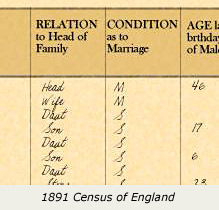Quantitative Evidence
A valuable source for analyzing modern women’s history is quantitative evidence. It can help locate women within a greater society at the local, regional, national, and even, international level.

National governments, with their expanding bureaucracies, have increasingly undertaken the task of compiling statistical material about their citizens/subjects. This material includes national censuses that contain a variety of information, such as language of daily use, mother tongue, race, religion, marriage and family patterns, and longevity, as well as birth, death, and infant mortality rates.
Moreover, privately produced quantitative evidence (including polls, long-term medical studies, and other nongovernmental research) address numerous issues connected with globalization. Among these are the trafficking of women and children, differential nutrition levels, disease, wages and wage differences based on gender, and living standards. Much of the statistical evidence—including fertility levels, literacy, marital status, or rates of celibacy, marriage, and divorce—relates in one way or another to women’s situations, even when those gathering the material were not doing so with women in mind.
Categories of statistical analysis are created for a purpose. Analyzing the categories themselves can provide insights into how a society views women and gender, and into society as a whole. Why, for example, is the site of the United States census the home rather than the workplace? Why is women’s work in the home often not included in traditional studies of labor?
Statistical data usually contains information about groups of women, categorized by factors such as age, race, location, or economic situation. These often reveal little about individual women’s experiences, but can offer rich information about women’s experiences as a group. This kind of evidence enables us to make transnational comparisons about the lives of women as well as comparisons with men, and can tell us about changes in a wide variety of women’s experiences over time.


